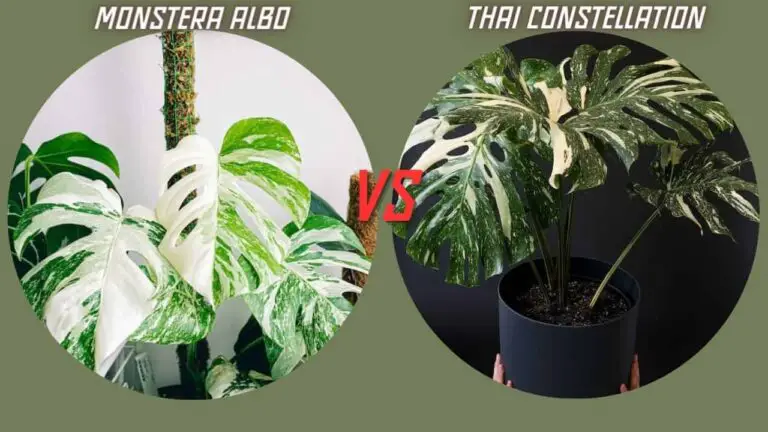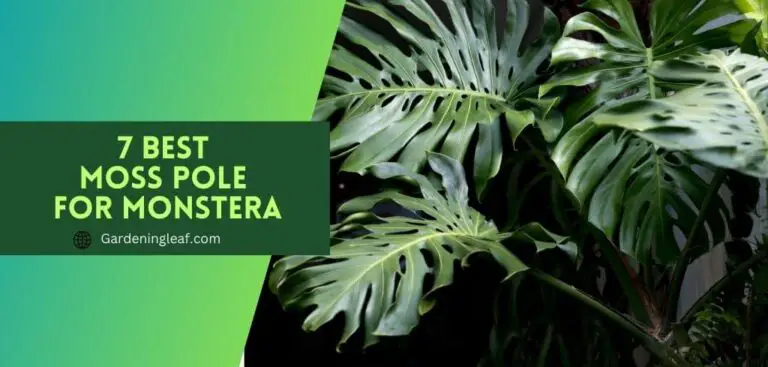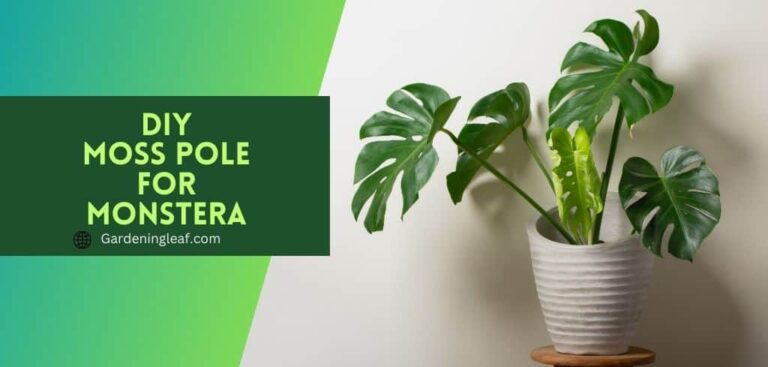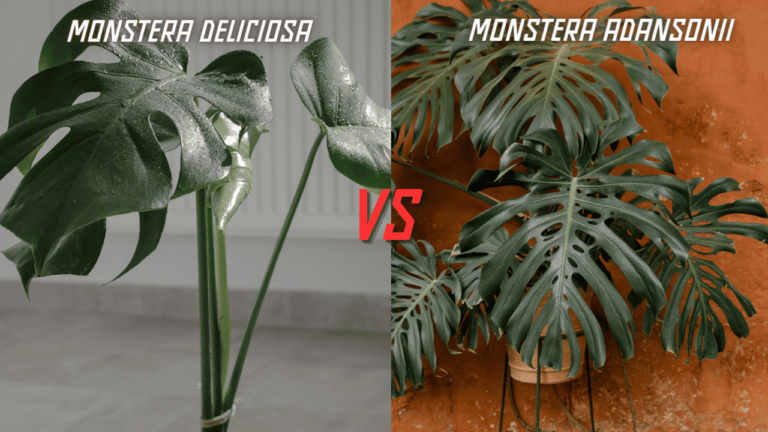Why Is My Monstera Dripping Water is it Sweating or Crying?
One stunning indoor plant that you can have in your home is a monstera. It is one of my favorite houseplants. But If you have a monstera, you might notice that it’s dripping water. You may be confused about it, Why Is My Monstera Dripping Water is it Sweating, Crying or weeping?
But Monstera sweating is a fairly common phenomenon with this plant. This post will analyze the causes of water dripping from Monsteras and how to stop it in your house!
Why is my monstera dripping water?
The most common reason is the “Guttation” process. It’s a natural process when the leaves are exposed to high humidity, which is most likely why your monstera’s leaves are dripping water.
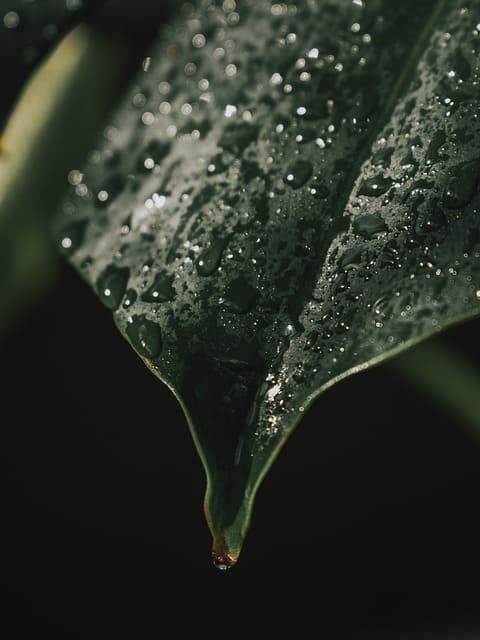
Normally when we see those droplets, we think they are water, but they are made of xylem sap, a mixture of extra water and minerals.
You can compare it with human sweat. When we sweat, moisture leaves our body through the pores on our skin. Plant leaves collect water from the surrounding environment through the guttation process. These water droplets know as dewdrops and can be very small or huge. The high humidity levels cause these water droplets to form on the leaf’s surface. Which then drip down onto the plant below.
Plants must transpire to survive. During transpiration, water vapor is released from the stomata, or pores, on the underside of a leaf. Because it is not photosynthesizing at night and has insufficient energy to open its stomata, the Monstera plant cannot transpire. Moisture still needs to leave, which is performed by forcing it through particular guttation pores on the leaf.
Small holes called hydathodes, located at the tips of monstera plant leaves, play an important role in the plant’s life cycle. These hydathodes allow the plant to expel excess water and mineral salts from its xylem tissues, helping it to regulate its water balance and maintain optimal health. By doing this, these hydathodes are essential for the survival of the monstera plant.
Guttation pores on the edges or margins of leaves allow water to escape without significantly lowering moisture.
It helps to keep the plant moist and allows it to regulate its temperature more easily. However, if you are seeing water dripping from your Monstera plant more than usual, it might be a sign that the humidity in your home is too high.
Is it normal for a Monstera to sweat and drip water?
Monsters are tropical plants that are well-known for sweating and dripping water. These plants are native to warm climates, with high humid environments and air temperatures. As a result, these plants need to keep their cells hydrated to function. They release moisture through their pores (sweating) or drops of liquid falling from the plant’s leaves.
Read More : 10 Best Pots For Fiddle Leaf Fig
Guttation and Dew is the same thing?
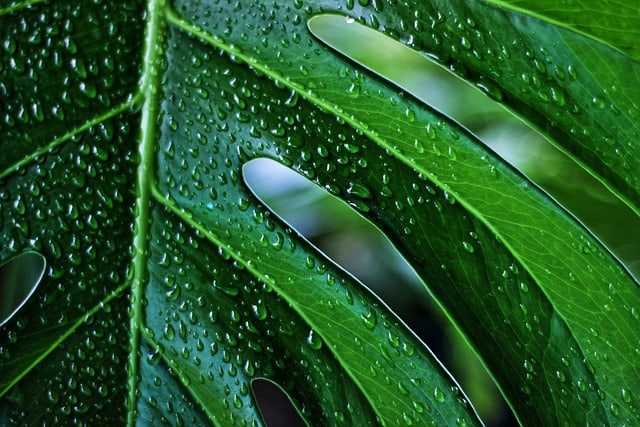
Most people confuse guttation and dew, but they are water droplets falling from leaves. While the dew is created by condensation and moisture in the air, guttation is the forced release of sap from within the plant. Morning dew is generated by humidity and moisture mixing together throughout the day, collecting on chilly surfaces like plants.
Dew occurs on outdoor plants because water evaporates from the plant’s surface faster than it can be absorbed. Indoor plants are more prone to guttation since they are frequently exposed to high humidity. This higher soil moisture level causes the plant to release moisture through its leaves into the air as droplets.
Other Causes of Monstera Guttation
As you already know, Guttation is the main factor why is my monstera dripping water. But a few other factors can cause your monstera leaves to dripping water.
1) Overwatering
One of the most pressing issues with plants is overwatering. It can cause your Monstera to drip water because the plant is trying to extract more water from the soil. Try adding more drainage holes in the bottom of your pot or moving the Monstera to a drier location. Check the plant’s water level regularly and don’t let it get too low. Monsteras like slightly moist soil. If you still have trouble, consider transferring your Monstera to a different pot. If your monstera plant is overwatered, you might also notice pests, fungus, or mold.
2) Mineral Deficiencies
If your monstera is drooping leaves and water droplets are dripping from them, it may be due to mineral deficiencies. Check the soil for excess salts or fertilizer residue, and Amend as Necessary. Once corrected, water your plant well and monitor its progress regularly.
3) Over-Fertilising
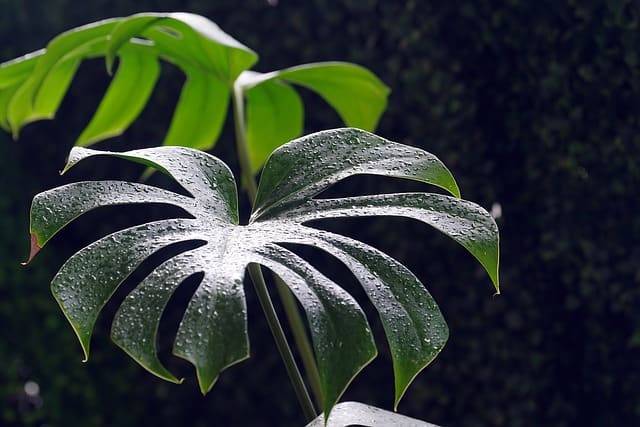
Over-fertilizing your monstera can cause water to drip from the plant’s leaves, poor growth, and even yellowing of the leaves. To minimize this issue, you will need to check the pH levels of your soil and adjust them as necessary.
Only when the soil is dry. Finally, monitor your plant regularly for any signs of trouble and take appropriate action if needed.
4) Stress or Growing Condition Changes
Monstera droop leaves and water droplets dripping from them could also be due to changing growth conditions, like excess humidity. If the plant is humid, it will struggle to extract water properly and may droop its leaves. Try raising the humidity level in your grow room or using a dehumidifier to reduce moisture levels before rewiring your monstera’s hydration system.
5) Root-Bound
One of the most common causes of water droplets dripping from plants is root-bound. This means the plant’s roots are confined and unable to spread, which can cause water to accumulate near the surface. To free your monstera roots, gently remove some of the soil around its base with a watering can or shovel. You may also need to de-tangle it by carefully pulling out any entangled roots with a pair of hands. Once freed, replant in fresh soil and give it plenty of moisture.
Read More :- How to Keep Moss Pole Moist: 10 Awesome Tips
How do you stop Monstera from sweating?
1) Watering Restrictions

If your Monstera is sweating a lot. Too much water may be the reason behind it. Overwatering causes water to seep into the root zone of plants, and when this happens, the plant’s vital functions are compromised. This can lead to excessive sweating, leaf wilting, and even death if you notice that it’s excessively sweating, dripping leaves or turning yellow and falling off. Then you need to maintain a watering schedule to prevent this.
2) Prefer Cool Temperature
If the temperature in your room is high for a long time, your monstera may be sweating because of the heat. Try to cool down the room by turning off unnecessary lights, opening windows, or using an air conditioning unit. Keep your monstera’s water temperature between 68-74 degrees F. This will help reduce sweating.
3) Check the Air Quality
Maintaining the quality of the air in your home is important. If you monstera near any heat sources and smoke. Try to move your plants to a room with better air quality.
4) Check the pH Level
If your monstera’s water is acidic, it may be sweating because of its low pH. Acidic water can cause sweating by depleting plant nutrients and disrupting the plant’s normal water balance.
5) Check for Moisture Levels
If your monstera is sweating a lot, and the water droplets are gathering near its surface, it may be dripping because of moisture levels. Make sure to water your plant watering can get into the soil, so that excess water doesn’t collect on the leaves or roots. Overwatering can result in root rot and other issues.
Try keeping the plant in a dry area. Monstera plants need to be kept at a humidity level that’s comfortable for them. Your plant might start to sweat if the environment is too humid. This too much moisture can cause root rot, which will ultimately kill your plant. Closing your windows can help minimize the moisture in the air when it gets humid.
6. Fertilize your Monstera regularly
It’s important to fertilize your Monstera regularly to ensure healthy plant growth. A balanced mix of plant fertilizer works best; read the label to ensure that you use the correct concentration and frequency. Feed your plant once a month during active growth or every two weeks while it’s slowing down in the winter months. Over-fertilization can lead to excessive sweating, distorted leaves, and even root rot. Follow the fertilizer instructions that come with your plant, or consult a gardening expert.
7. Pruning
One of the most important things is pruning your plant regularly. Pruning will help remove excess growth and foliage, restricting light and air flow and leading to conditions such as fungus or disease. In addition, regular pruning will promote a healthy balance between the leaves and branches, resulting in more colorful plants with better structural integrity.
8. Repot
Plant roots increase in size over time, necessitating more space to grow. Repotting your plant every two to three years will help it survive the stresses of humidity and temperature fluctuations stresses. Changing the soil’s moisture content can also promote healthy root growth.
9. Give it a good light
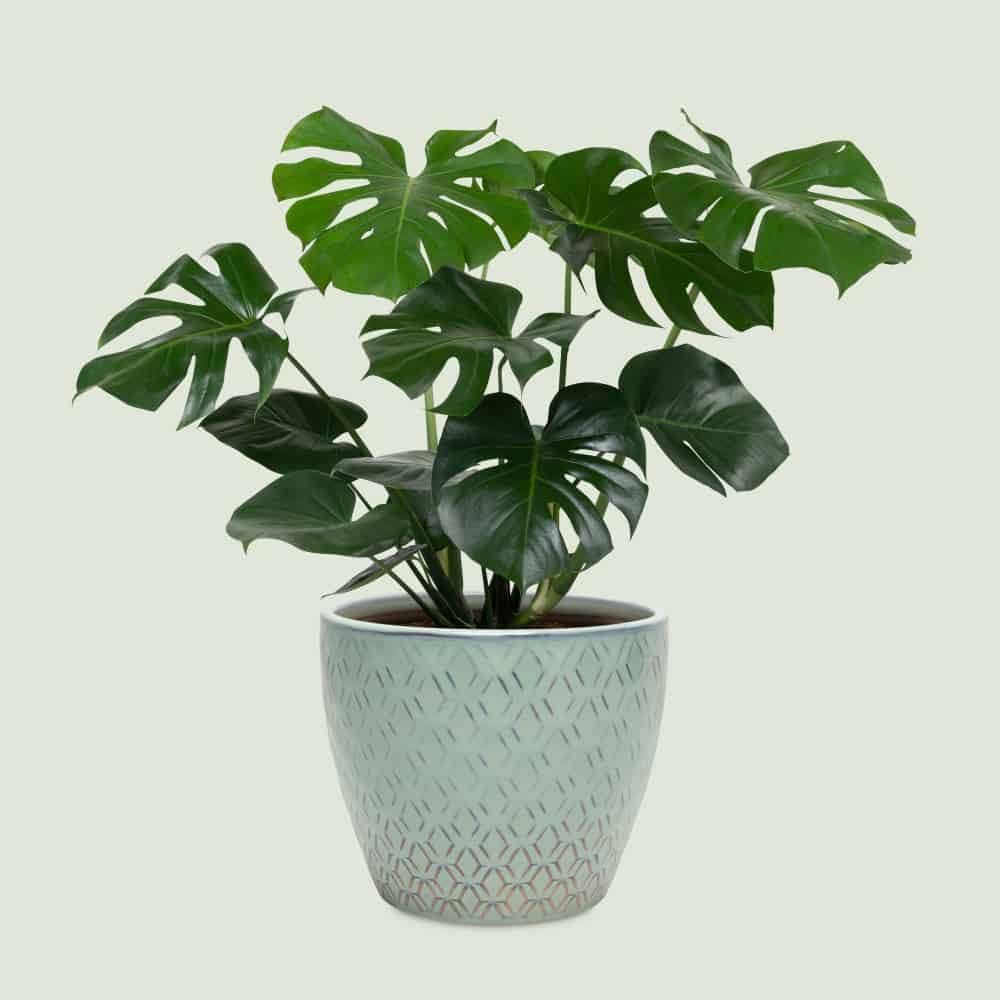
It’s important to provide your Monstera with enough light to grow properly. If your Monstera is not getting the sunlight it needs, it will start sweating, and the plant will eventually die. To address this issue, you can introduce more light by moving your monstera to a brighter environment or placing it in front of a sunny window. Monstera should be grown somewhere with lots of natural light, preferably from dawn until noon.. Avoid direct sunlight during high-intensity afternoon hours as it can cause yellowing leaves or scorched tips on plant stems.
Top Tip: water monstera at the same time each day so that moisture levels are consistent.
10. Lack of drainage
Monstera plants are grown in pots and typically require much less water than those planted outdoors or in soil. To help avoid overwatering, give monstera a good soaking once per week and water sparingly from there on out; keep the droplets that fall from the plant’s leaves contained so as not to cause excess watering problems down the line. When watering monstera plants indoors, make sure drainage is excellent by placing an inch of gravel over the drain holes before
Read More : Coir Pole Vs Moss Pole: Which one is Better for Gardening?
Conclusion
Monstera is a beautiful plant that requires proper care and attention to grow well. But if you find monstera dripping water, don’t worry about its normally, as we discussed above and have given some tips to stop it. I hope you find the answer why is my monstera dripping water. But remember: keep an eye on your plant at all times!
Source :- https://www.thesill.com/blog/how-to-care-for-monstera-monstera-deliciosa

